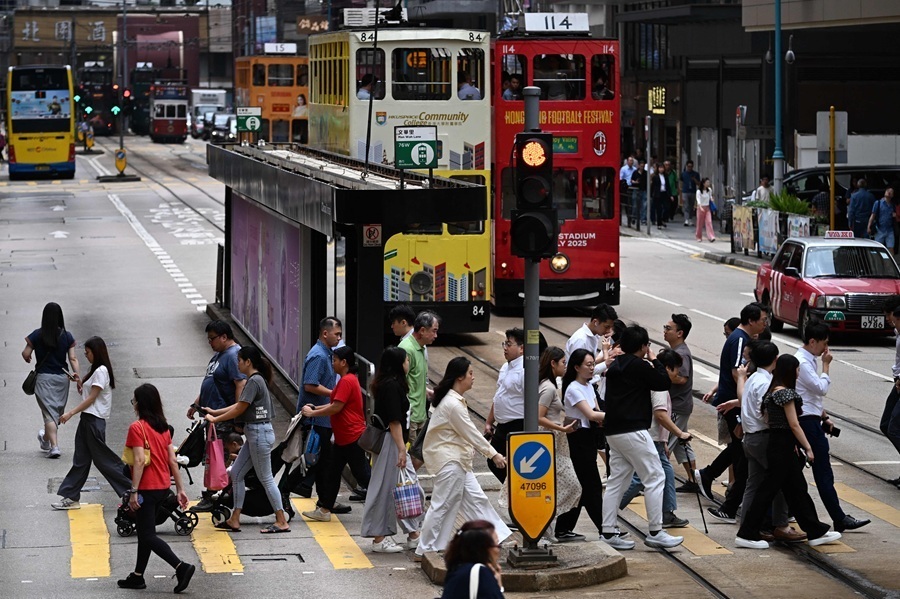[Big read] From 80 square feet to a home: New hope for Hong Kong’s poor?
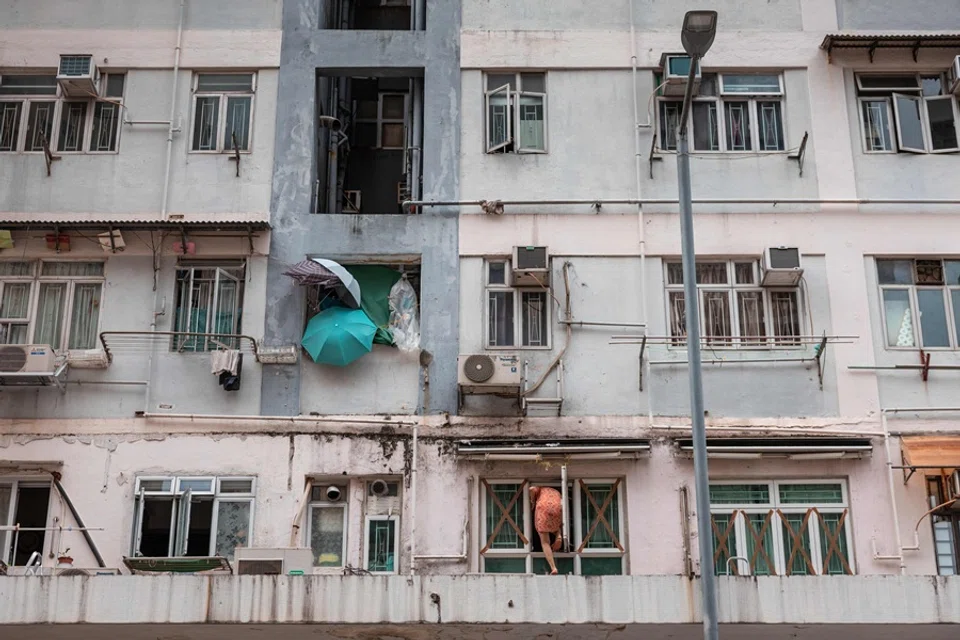
Hong Kong’s persistently high property prices have left hundreds of thousands of its residents with little choice but to rent subdivided units with terrible living conditions. Lianhe Zaobao journalist Tai Hing Shing speaks to residents to find out if government initiatives are helping.
For many years, Sham Shui Po — a traditional old district — has had one of the highest poverty rates in Hong Kong, and subdivided units (SDUs) have proliferated there. For the past three years, Tam (38), her husband and their seven-year-old son have called one of these units home — a cramped space of just 80 square feet.
When I visited them on the evening of 19 September, Tam was still at work. At home was her husband, young son and her mother, Madam Wang (60), who had come over specifically to take care of the family.
Madam Wang explained that her son-in-law, a mainland Chinese national, is still waiting for his Hong Kong identity card and is therefore unable to work. As a result, Tam is currently the family’s sole breadwinner, working as an administrative staff member and earning around HK$20,000 (US$2,570) a month — barely enough to cover their household expenses.
“Hong Kong is expensive; besides the HK$4,800 monthly rent for this unit, there are living expenses, transport costs, and my grandson’s school fees to be paid for. There’s often very little left by the end of the month,” she lamented.
High cost, poor conditions
The type of accommodation the Tam family lives in is commonplace in Hong Kong. It involves a residential unit being partitioned by the landlord into two or more smaller, separate units for sale or rent.
During my visit, I saw that the Tams’ place was originally part of a residential unit that had been subdivided into four tiny rooms, each leased out to different tenants. Each room was exceptionally small, lacking basic amenities like a proper kitchen, and offered barely any space to move around.
Madam Wang lamented the poor living conditions her daughter’s family is forced to endure, mentioning persistent bug infestations that make it difficult to sleep at night. “My grandson is in Primary 2,” she said. “He’s very active at school, but the moment he comes home, he becomes withdrawn and spends hours on his game console. We’re worried about how this might affect his development.”
... rent expenses accounted for nearly 45% of their earnings.
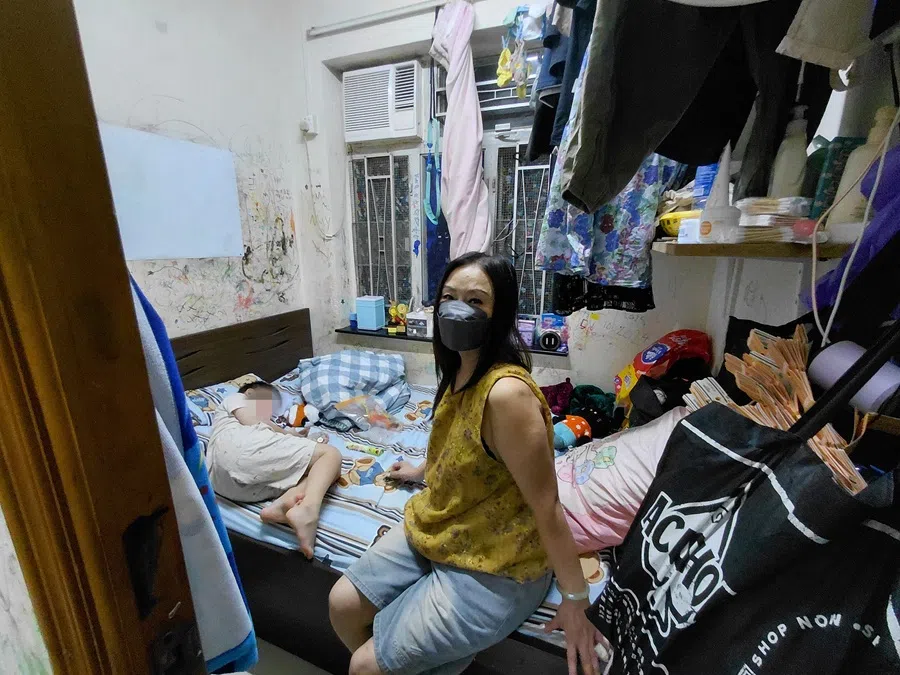
For over a decade, Hong Kong’s persistently high property prices have forced many low-income families, like the Tams, to rent SDUs, as they are priced out of renting standard apartments. While SDUs are cheaper, they are often in terrible condition and uninhabitable.
Between May and July this year, the Society for Community Organisation, a non-governmental organisation (NGO) in Hong Kong, interviewed 300 residents living in SDUs, cubicle apartments and rooftop structures, and 34 residents living in transitional housing (TH).
The survey found that 93% of respondents felt this summer was notably hotter than previous years; 77.3% relied on air conditioning or fans for relief, 42.3% coped by showering more frequently, and 36.3% opened windows for better ventilation.
Among those interviewed, 35.7% could not open the windows in their SDUs because they face the light well or for other reasons, while 4% lived in windowless SDUs.
Of the respondents, 80% also complained about high utility costs, with median monthly bills reaching HK$350 for electricity and HK$100 for water — a considerable expense given that their median monthly income stands at just HK$11,500, markedly lower than the Hong Kong average of HK$22,500. Furthermore, rent expenses accounted for nearly 45% of their earnings.
The protracted SDU issue continues to fuel public discontent in Hong Kong. In 2021, Xia Baolong, director of the Hong Kong and Macao Work Office, urged Hong Kong to eradicate SDUs and cage homes by 2049, when China celebrates its second centenary goal. In response, the Hong Kong government has in recent years renewed its commitment to tackle this deep-seated problem.
Community Living Room government initiative
For instance, the government launched its Community Living Room (CLR) initiative a couple of years ago to provide SDU residents with around-the-clock complimentary access to shared facilities such as kitchens, dining areas, learning spaces and laundromats. Activities and talks are also held regularly in CLRs to give SDU residents greater social support towards enhancing their quality of life.
Four CLRs were set up in Hong Kong last year, with five more scheduled to open this year. According to the government, these nine CLRs can jointly serve at least 4,000 SDU households and accommodate more than 610,000 visits annually.
Many SDU residents have praised the scheme as CLRs provide them with additional living space so they do not have to be confined to their residences for long hours, raising their living quality appreciably.
All substandard SDUs must be upgraded or closed by 28 February 2030.
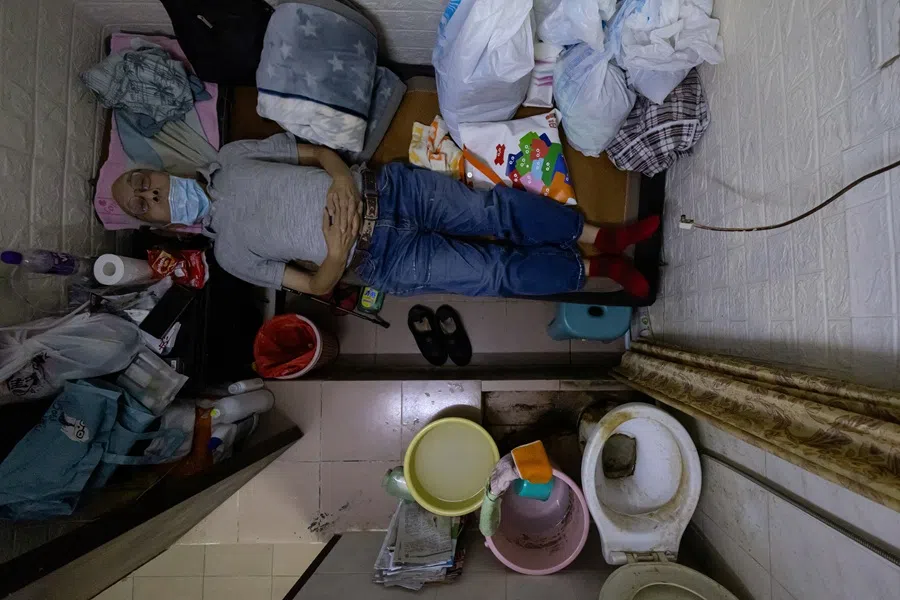
In September, the government announced six new CLRs, adding to the nine already set up. Together, they’re expected to support 7,000 SDU households and handle over 1.4 million visits a year.
That same month, the Legislative Council passed a law introducing the Basic Housing Units (BHU) regulatory regime. It sets minimum standards for SDUs and introduces penalties for landlords of uncertified units. BHU registration will start on 1 March 2026. All substandard SDUs must be upgraded or closed by 28 February 2030.
The government estimates 30% of Hong Kong’s 110,000 SDUs will need major upgrades, while the rest can meet standards with minor fixes.
Tenant concerns over rental hikes
However, reactions among SDU residents towards BHU regulations are divided. Earlier, the civil society groups “Concerning Grassroot Housing Rights Alliance” and the “Hong Kong SDU Residents Alliance” surveyed SDU residents on the matter and gathered 100 valid responses.
Approximately 33% of respondents believe that the new regulations will have a positive impact, helping to regulate the rental market, hold landlords to account and reduce non-compliant facilities.
... about 31% expressed their concerns that the proposed rules have already triggered rental hikes and pressure from landlords to vacate.
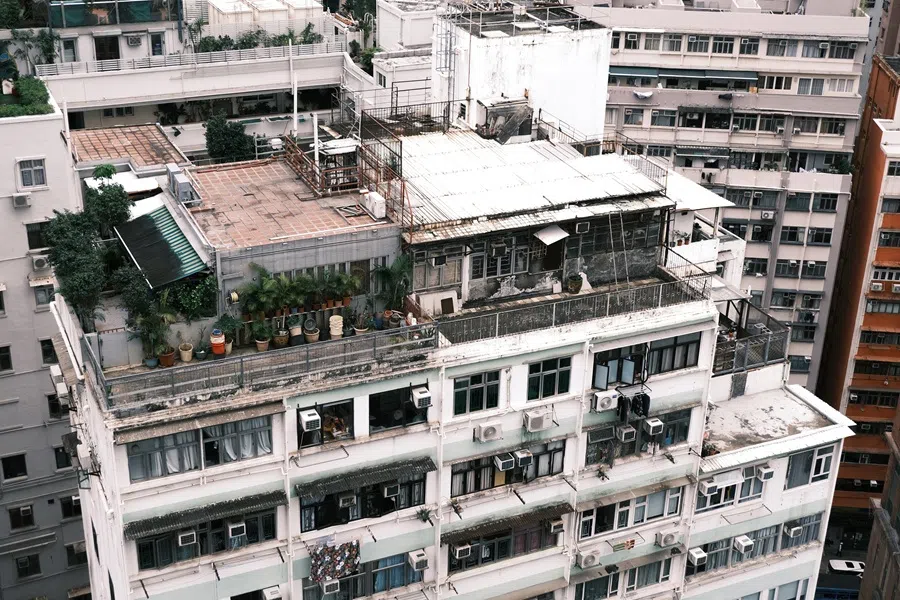
However, about 31% expressed their concerns that the proposed rules have already triggered rental hikes and pressure from landlords to vacate. They question whether the authorities truly understand the situation on the ground.
A separate survey of 151 SDU households conducted in July by the Hong Kong Federation of Public Housing Estates (FPHE) via social media and site visits echoed these mixed feelings. While over 70% believed the government’s intervention would improve their living conditions, ensure safety, and help reduce or eliminate inferior SDUs, 15% felt that the new BHU regulations would still fail to deliver better living conditions.
Madam Wang noted that her daughter’s current SDU, which has a small window, would technically comply with the government’s new standards without requiring modifications. She added that while upgrading an SDU to a BHU would improve living conditions, she is certain that the renovation costs would be passed on to tenants, adding to their financial strain.
FPHE executive director Anthony Chiu told Lianhe Zaobao that SDU tenants hope rent increases will stay within 5%. He urged the government to monitor BHU rents closely and provide transtional housing (TH) if tenants are priced out.
When interviewed, Hung Wing Lok, a lecturer at the Chinese University of Hong Kong (CUHK) School of Governance and Policy Science, highlighted the stark contrast between Hong Kong’s status as a high-income economy and the reality that over 200,000 people still live in SDUs. He noted that widespread foreign media coverage of these cramped conditions has damaged the city’s international image, raising doubts about its livability.
... the long-term solution to Hong Kong’s housing crisis is for its government to prohibit the sale or leasing out of units that are too small and to quicken the pace of constructing affordable public housing. — Hung Wing Lok, Lecturer, School of Governance and Policy Science, Chinese University of Hong Kong
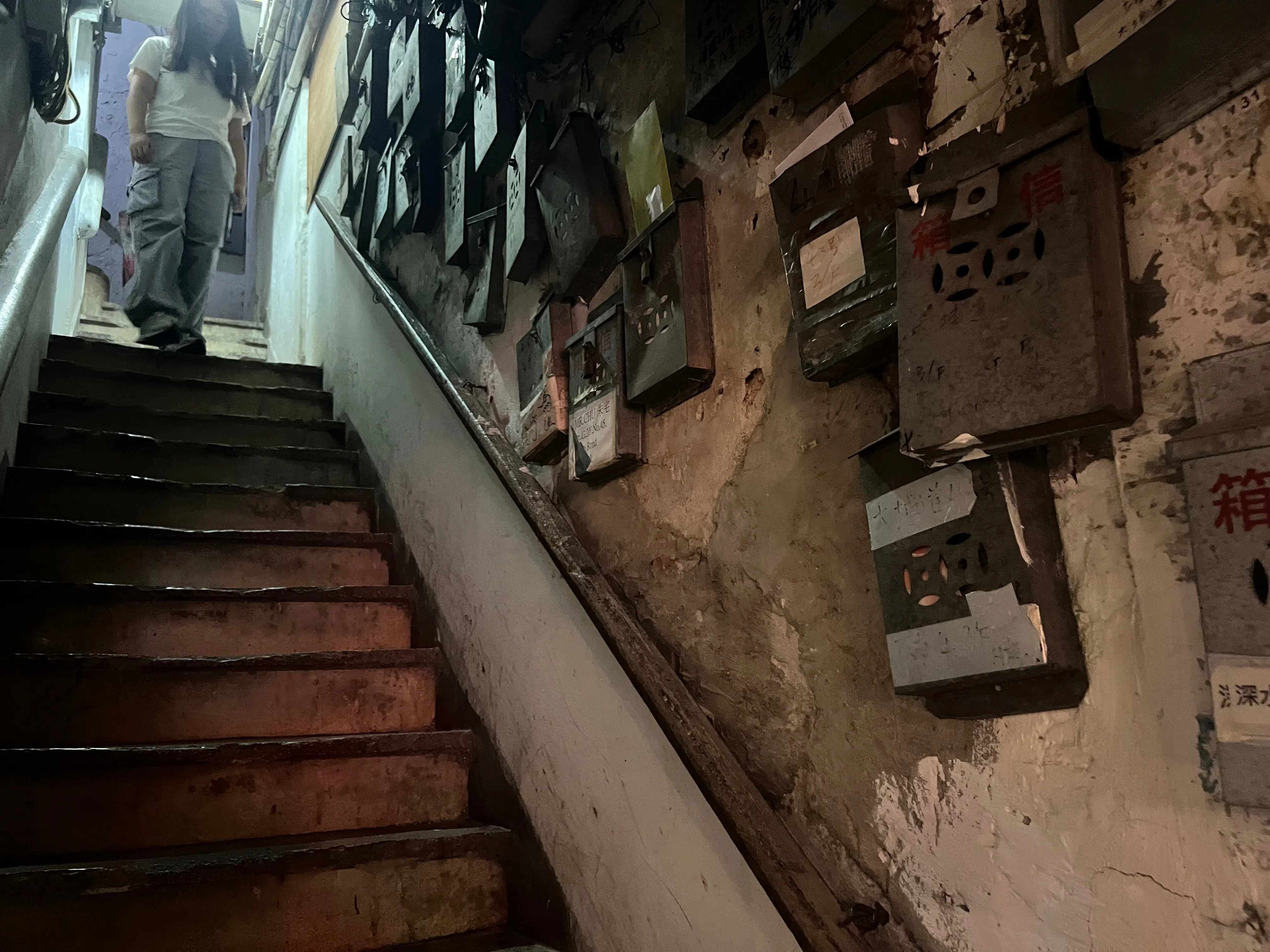
Hung suggested that the government classify SDU households into groups — such as elderly singles, middle-aged individuals, new immigrants, and large families — to better tailor support and ease potential short-term rent hikes under the new regulations. He added that welfare organisations, the Care Team initiative, and the Employment Support Supplement scheme could play key roles in helping these groups.
However, Hung stressed that the long-term solution to Hong Kong’s housing crisis is for its government to prohibit the sale or leasing out of units that are too small and to quicken the pace of constructing affordable public housing.
Shortened waiting time for public rentals
In recent years, the government has also been exploring a multi-pronged approach to increase public rental housing (PRH) so that low-income families can move in faster.
Earlier this year, the Housing Bureau announced that the Composite Waiting Time for Subsidised Rental Housing decreased by 0.2 years from the first quarter of 2025 to 5.1 years in the second quarter — its lowest point since the first quarter of 2018.
She said that her new residence is over 300 square feet, several times bigger than the SDU they were living in previously, and the monthly rental of over HK$3,000 is also cheaper.
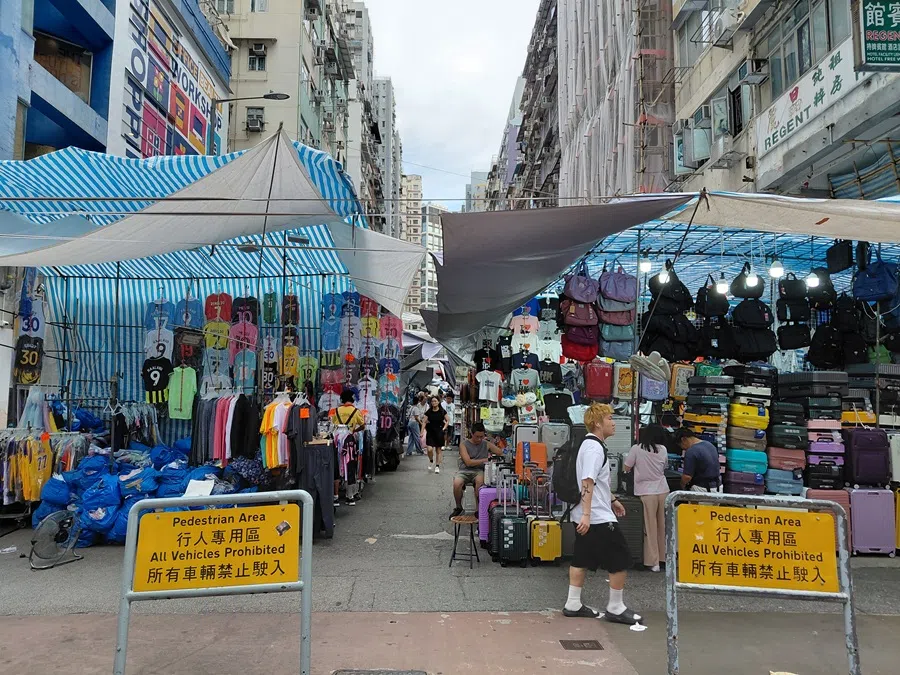
When I first interviewed Chau Ling three years ago, she was living in an SDU of barely 100 square feet in Sham Shui Po with her husband and eight-year-old son. When I contacted her again recently, Chau told me that her family had moved into a PRH unit a year ago.
She said that her new residence is over 300 square feet, several times bigger than the SDU they were living in previously, and the monthly rental of over HK$3,000 is also cheaper. “Our living conditions are better now, and we are under less financial stress,” she shared.
She praised the government for ramping up the supply of PRH and shared that some of her friends who once lived in SDUs have since moved into PRH units. However, she urged the government to continue expanding PRH availability, noting that private housing in Hong Kong remains too expensive for many, who cannot afford the down payment. “To achieve social stability, there has to be adequate housing for citizens,” she added.
FPHE’s Chiu noted that housing remains a key priority in this year’s Chief Executive’s Policy Address. He also welcomed the adoption of some of his suggestions, such as the new “Flat-for-Flat Scheme for Elderly Owners”. This scheme allows elderly owners of Hong Kong Housing Authority subsidised sale flats to sell their current homes and purchase smaller or more remote flats, freeing up larger urban units for families in need.
Chiu further argued that, beyond increasing public rental housing supply, the government should create more opportunities for low-income families to become homeowners by introducing schemes that let them buy units at below-market prices.
Government push for more temporary accommodation
Many Hong Kongers live in SDUs while awaiting their PRH units, a process that usually lasts several years. A few years ago, the government introduced Light Public Housing (LPH) units and promoted TH units, offering temporary accommodation for those awaiting PRH.
... the government has recently shifted from its long-standing “positive non-interventionism” by taking a more active role in addressing the SDU issue.
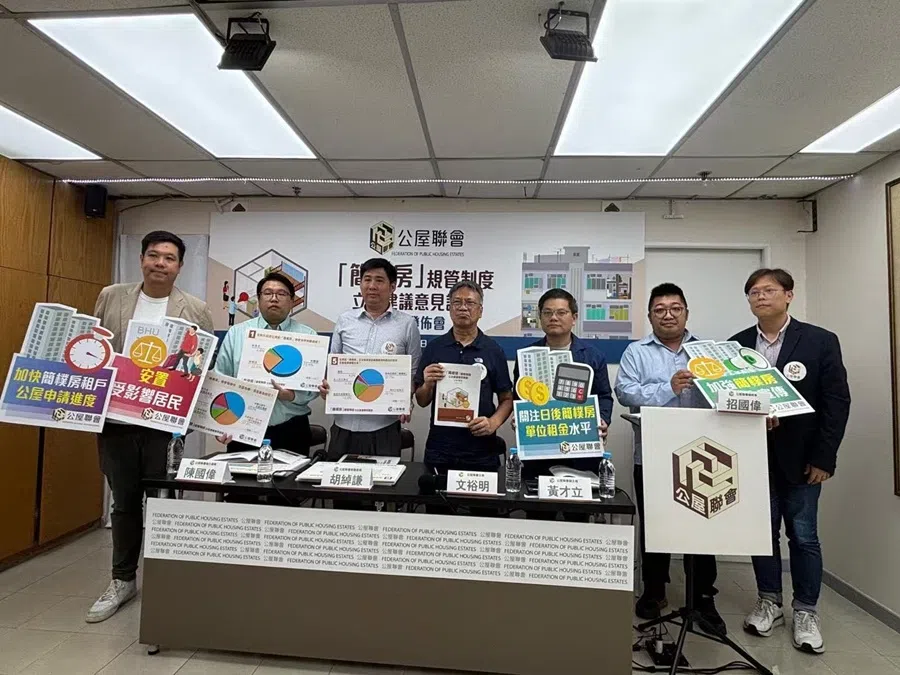
Light Public Housing (LPH) is a government initiative using Modular Integrated Construction (MIC) to quickly build standard units on government land without short-term development plans. These lower-rent units are designed for about five years of occupancy. The government plans to deliver around 30,000 units within five years, with the first batch ready for occupancy as of this September.
Meanwhile, TH projects are proposed and run by NGOs, who also manage their finances. TH units are built on vacant government or private land, or converted from unused school premises or industrial buildings.
By the end of August, about 18,400 TH units were available, with another 2,700 expected by the end of 2026, meeting the government’s target of 21,000 units. However, some SDU residents avoid LPH and TH units, viewing them as temporary, while others consider them a “safe refuge”.
CUHK’s Hung noted that the government has recently shifted from its long-standing “positive non-interventionism” by taking a more active role in addressing the SDU issue. He pointed to measures like the rapid rollout of LPH using modular construction and the Community Living Room (CLR) initiative, which improves shared spaces through cross-sector collaboration. While he acknowledged the government’s efforts amid economic and legal constraints, he urged it to explore more “low-cost, high-return” solutions to deliver lasting impact.
This article was first published in Lianhe Zaobao as “劏房哀歌即将成往事 住户喜忧交织盼未来”.




